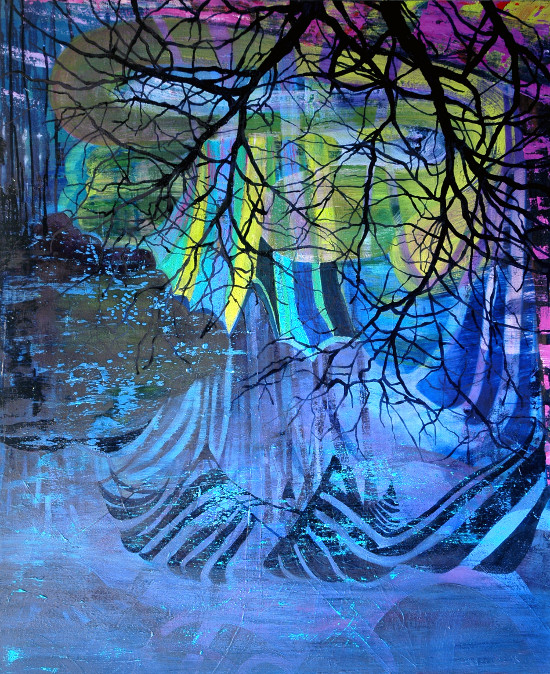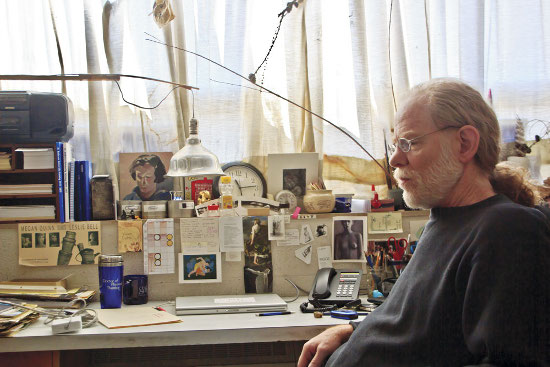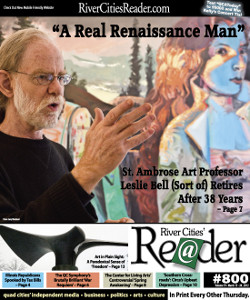
One is a potter, one a painter. Megan and Kristin Quinn are sisters living and teaching on opposite Mississippi River shores of the Quad Cities. Their paths to art were different, and their chosen media put them at polar ends of a visual-arts axis. Kristin said that, in jest, a brother-in-law calls her "Artsy" and Megan "Craftsy."
It doesn't take long in their presence to grasp their deep mutual admiration and friendship. However, Kristin was nine years old when Megan left for college, and the age difference precluded any close relationship in childhood.
As the Quinn sisters look back at their family of five children, they see just a few shared inspirations from their time growing up in Bowie, Maryland. Their parents were educators. He was a physicist and professor at the University of Maryland who specialized in optics and provided access to visually stimulating apparatuses: prisms, lenses, even early holograms. "We played laser tag with real lasers," said Megan with a laugh.
Along with plentiful lessons on the natural world, they were encouraged to ask questions. Kristin explained: "On long car trips, we passed the time with questions to stump Dad: Why was the sky orange, what caused hail, and how were tunnels built under the bay? ... We refer to these questions now as 'Tunnel Talk' questions."
The inquisitiveness fostered in their youth is readily apparent in their art, and they've built similar teaching careers: Megan is a ceramics professor at Augustana College, while Kristin - the painter - is a professor and chairs the art department at St. Ambrose University. They will be jointly honored with the Harley Award at 12:30 p.m. on Saturday, September 20, as part of MidCoast Fine Arts' Riverssance Festival of the Arts at Lindsay Park in Davenport.


 He then says he doesn't want to be cheesy - the simplistic idea that girls can be carpenters or play chess: "I want it to be more what we deal with everyday in the studio, which is following what you're interested in, sort out the 'should' voice in you ... , acknowledge that there is peer pressure and that there are societal pressures and that there are laws, but then make as much use of the freedoms that you have to cultivate your interests, develop your interests, don't be ashamed to be an intellectual, fight me as a professor ... ."
He then says he doesn't want to be cheesy - the simplistic idea that girls can be carpenters or play chess: "I want it to be more what we deal with everyday in the studio, which is following what you're interested in, sort out the 'should' voice in you ... , acknowledge that there is peer pressure and that there are societal pressures and that there are laws, but then make as much use of the freedoms that you have to cultivate your interests, develop your interests, don't be ashamed to be an intellectual, fight me as a professor ... ."







